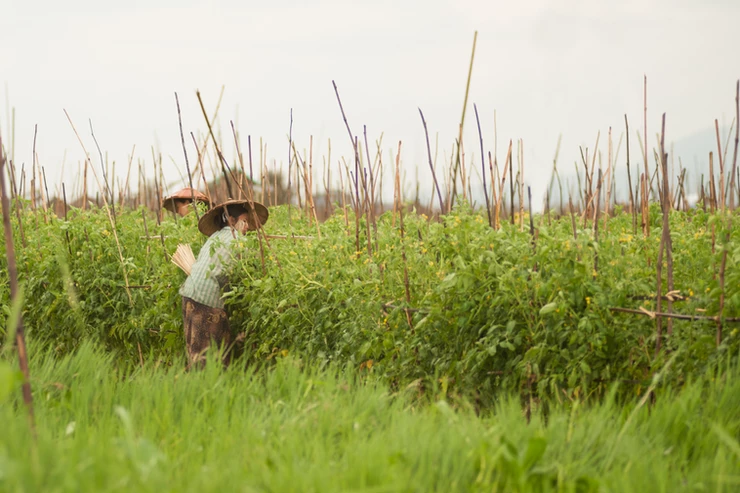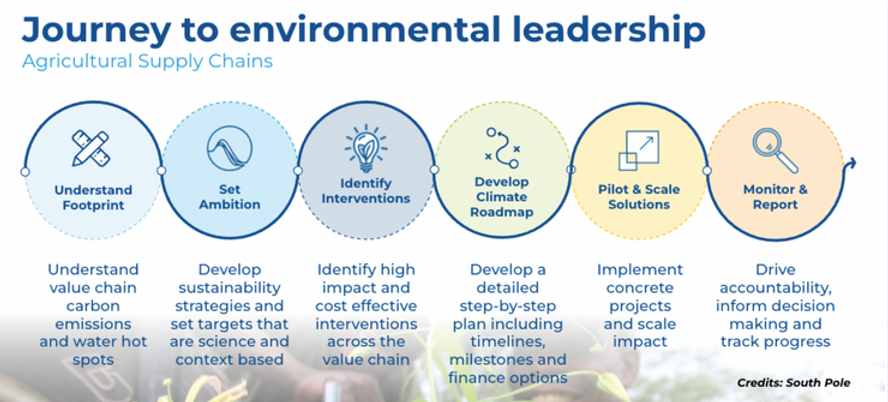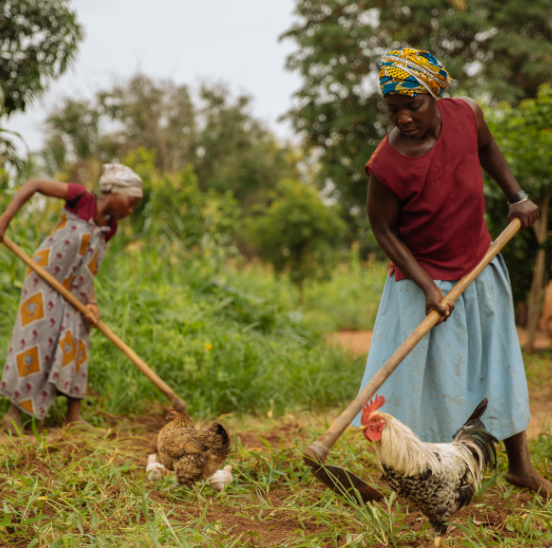Grow Asia organized a learning session for its RAI Community of Practice (CoP) on ‘Carbon in Agriculture and Forestry’ on 17 March 2022. Grow Asia curated a panel of experts Jacelyn Tan from South Pole, Nanda Noor from Science Based Target Initiatives, Yvonne Zhang from Deloitte, and Fitrian Ardiansyah from IDH, the sustainable trade initiative. The panelists provided definitions, overviews, and insights on understanding carbon footprint, setting reduction targets, offsetting emissions with high-quality carbon credits, and collective action among supply chain actors.

Photo credits: Grow Asia
Food, Agriculture, and Forestry Contribution Climate Change – What does it mean for Southeast Asia?
Globally, the impact of agriculture on the planet’s resources is significant – agriculture accounts for 50% of habitable land use and 70% of global freshwater use. Food production and its related processes alone account for 25% of global greenhouse gas emissions. As the ASEAN population increases from 690 million at present to 770 million by 2040, there will be greater pressure on the food system to feed a larger population and therefore an increase in carbon emissions – unless the region implements significant mitigation efforts. The ASEAN State of Climate Change 2021 report lists climate-smart agriculture and nature-based solutions such as agroforestry as key strategies to mitigate and adapt to climate change in these sectors
What is the role of private investments in ASEAN? By 2030, ASEAN will be the fourth-largest economy in the world. Private sector engagement therefore will be critical in climate action. A recent report published by South Pole and Carbon Disclosure Project found that only 8% of companies in the Asia Pacific had set science-based targets (SBT). This shows that there are plenty of opportunities and work to be done with the private sector to accelerate climate action for the region. How can companies get started on their climate journey? Companies typically embark on a climate action journey (Figure 1), which begins with having an accurate understanding of their climate footprint based on international best practice guidelines such as those stipulated by the Greenhouse Gas Protocol developed by the Intergovernmental Panel on Climate Change (IPCC). Figure 1: Overview of the climate journey with the private sector

Photo credits: Grow Asia
This journey entails measuring the greenhouse gas emissions from both their direct (Scope 1 and 2) and indirect supply chain emissions (Scope 3). Direct emissions are those associated with their operational footprints such as company vehicles, energy, and heat generation, purchased electricity, steam, and heating and cooling that are used at a company’s facilities. Typically, Scope 1 and 2 data can be obtained by setting up a structured data collection process and providing capacity training for factory staff to monitor and collect relevant data points such as energy and fuel consumption at their operations. What are the challenges with accounting for indirect supply chain emissions (Scope 3)?
Accounting and reporting standards for corporate value chains (agricultural and food companies) need to align with 15 categories for Scope 3 which requires companies' external support to comply with the sampling, processing, and understanding data of its operations. The main challenge in accounting for supply chain emissions is the limitations of traceability for purchased goods and services mainly from the sourcing of raw materials. For fast-moving consumer goods (FMCG) companies who rely on intermediary suppliers, emissions from the first category of Scope 3, Purchased Goods and Services (PG&S), are significant and typically account for more than 50% of the company’s total GHG footprint. As agriculture supply chains are complex and commodities usually pass through different stages from farmers, traders, and processors, it is difficult to accurately assess activities at the farm level. In the short term, companies can use recognized global datasets such as World Food Lifecycle Database (WFLDB) to obtain an estimate of their environmental footprint impact through proxy emission factors that show country-level emission for a particular crop, which may often not reflect more granular local sourcing situation.
In the long term, companies should work with suppliers to establish traceability programs for their top sourcing ingredients. Such traceability programs would:
-
monitor on-farm emissions such as fertilizer and crop protection emissions, land-use change emissions;
-
track how improvements to farm-level management can ultimately result in reduced carbon footprint and other co-benefits to biodiversity and water use conservation;
-
monitor land-use change emissions, a critical topic especially for Southeast Asia a region that has lost one-sixth of its forest, primarily due to commodity-driven deforestation according to the latest research;
-
entail mapping of geo-coordinates of sourcing areas with high deforestation-risk allowing companies to quantify historical land-use change occurring on the land; and
-
work together with partners to implement monitoring process to prevent further land-use change from occurring
Once companies have accurately established their carbon footprint at the baseline year, the next step in the climate journey is to develop a climate ambition in line with Science-Based Targets (SBTs).
How can companies align their climate action and commitments with science-based targets (SBTs)?
Science-based targets are used for companies to align their climate action commitments to reduction pathways that lead to the goals of the Paris Agreement and the latest climate science. The Science Based Targets Initiative (SBTI) leads the work in crafting sector-specific methodologies to help companies in setting realistic targets and achieving their commitments. Selecting an appropriate methodology is a critical step in realizing these commitments. A common way of measuring emissions, called the absolute emissions contraction method, applies to most sectors including agriculture. The output is an overall GHG emission reduction to the atmosphere by the target year, relative to the base year (e.g. reduce annual CO2e emissions by 35% by 2025, from 2018 levels). This method also includes setting up a carbon budget, emissions scenario, and allocation approach. Although companies may use this method to start measuring their progress toward climate commitments, the SBT does not yet have specific guidance for the agriculture and forestry sectors. SBTI has released a draft set of guidelines for the Forest, Land, and Agriculture Sector (FLAG) sector, which is under consultation as of June 2022. How can companies learn more and get involved?
Grow Asia recognizes that businesses in agriculture, food, and forestry operate differently and are at various stages of reaching commitments to GHG reduction targets. Companies at any stage need to understand how to create, execute and measure corporate targets and practices. This is why Grow Asia creates pre-competitive venues, like our Responsible Agriculture Investing (RAI) Community of Practice, for companies to share experiences, resources, and insights on relevant topics such as carbon.
This article was originally published by Grow Asia.

